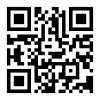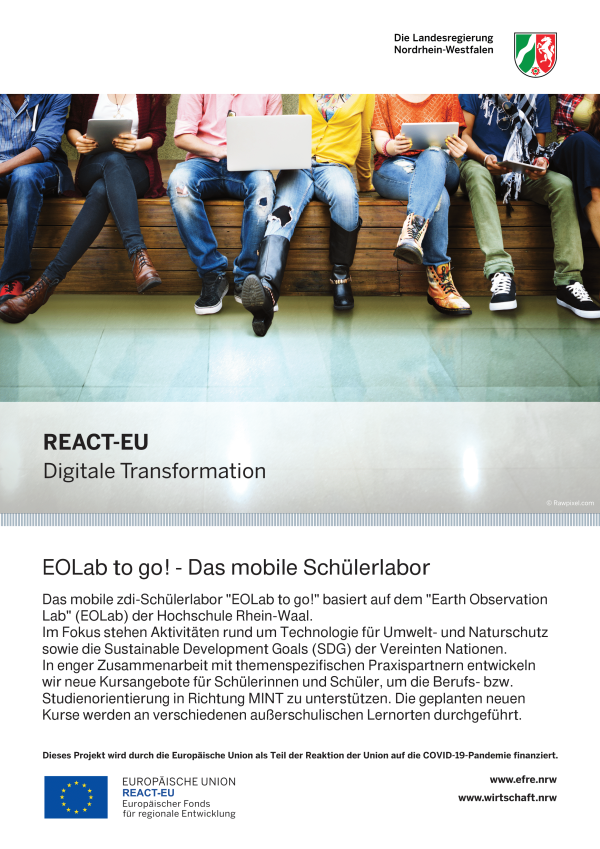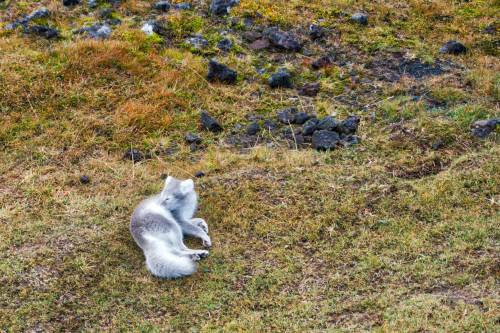Welcome to the HSRW Earth Observation Lab - EOLab!
wiki.eolab.de
The EOLab is a laboratory of the Rhine-Waal University of Applied Sciences (HSRW).
It is located at the Faculty of Communication and Environment, Campus Kamp-Lintfort.
The EOLab Wiki is used by the Lab3 laboratory network consisting of
- Earth Observation Lab,
- IoT Lab,
- Drone Lab.
Falkenhorst im Zechenturm
https://www.youtube.com/@eolab/live
AUSGEBLENDET
zdi-React-EU - Welcome to EOLab to go!
Latest Drone Flight with DJI Avata on 2023-06-03
Great Happenings
Collaboration Opportunities for Companies
Current Activities at the ECOtower of the Andesflux Network
Our team member Jan Sonntag is currently supporting Eric Cosio, professor at the PUCP University in Peru. Eric is planning and managing a network of measurement towers for atmospheric research named AndesFlux distributed in the Amazon region of Peru along the foot of the Andes mountain range.
Jan and Eric are currently at the ECOtower, the first of the AndesFlux measurement towers, at Rio Tambopata, close to the city Puerto Maldonado.
Visiting the La Salle University of Technology (ULSA)
As part of the DAAD project LatiNet we are visiting the ULSA, Leon, Nicaragua.
More information on our activities can be found here.
Python Workshop at the Universidad Catolica El Salvador (UNICAES)
As part of the DAAD project LatiNet we visited the UNICAES.
On 2022-09-01 Clein and me gave a Python workshop.
We were hosting the FIRElinks Workgroup Meeting 2022 at HSRW!
- Official FIRElinks website
- Our FIRElinks - Kleve Meeting page
We were at Snap!Con 2022!
Weather Station
Selected Projects, Activities and Info Collections
Project Ideas
Current Courses
Blog
Let's Talk about the DJI NEO
(Harley Lara, Jan 2025)
Let's talk about the DJI NEO, the beautiful, lightweight and inexpensive (useless) drone.
Let's talk about Duckietown
(Harley Lara, Jun 2024)
In April 2024 we received a batch of 12 Duckiebots with NVIDIA Jetson Nano 4GB (variant DB21J) as part of the Classroom Kit (12). The main motivation behind choosing duckietown as our educational robot was mainly based on two aspects:
- Affordable hardware (initially we thought it was open hardware): The fact that it is Open Hardware gives us the flexibility (in the future) to extend the capabilities of the robot with different sensors or actuators.
- Educational content: Duckietown offers a MOOC on autonomous driving, plus a series of exercises and notebooks called duckietown-lx as practical implementations of some concepts, this was the selling point to choose duckietown as it offloaded the amount of work required to prepare the material and exercises of a course from scratch, so it left us more freedom to focus on supporting students in their learning process instead of worrying about the material.
Let's Talk about Jetson Nano in 2024
(Harley Lara, May 2024)
In March 2019 NVIDIA introduced the Jetson Nano in two variants, the Jetson Nano 'Module' which is a system-on-module (SoM) and a Jetson Nano 'Developer Kit' which is a carrier board with the Jetson Nano Module to facilitate the development and prototyping of edge AI applications. For the curious, the Jetson Nano contains a Tegra T210 system-on-chip (SoC), which interestingly is the same module that you will find in Jetson TX1 (the first generation of Jetson modules).
With the introduction to the market the Jetson Nano gained a lot of traction due to its price and the ability to offer GPUs with CUDA support at low power (10W max), however since then the hype for the Jetson Nano has dropped drastically, influenced by new introductions such as the Jetson Orin Nano. This blog seeks to describe the current status of the Jetson Nano.
Zeche Friedrich-Heinrich: Kamp-Lintfort wide Open LoRaWAN deployed!
(Jan Sonntag, Shreya Gupta, Rolf Becker, 2023-06-28)
Kamp-Lintfort is now covered by the community-driven open LoRaWAN network of The Things Network (TTN)!
Anyone in the area can now deploy their own LoRaWAN devices and use the new gateways for free to transmit data to their own TTN applications. Our first application is the data collection of our own groundwater gauges developed with and for LINEG.
IoT Workshop with the Georg-Forster-Gymnasium
The workshop at our IoTLab focused on device-assisted automated environmental sensor technology. Participants worked with a low-cost minicomputer, configuring it to work with various sensors. The goal was to use the device to collect and wirelessly transmit observation data for later visualization, such as in the form of diagrams. The aim is to continue and further develop this project for use in a course project.
First tests at the Tambopata Flux Tower for the Andesflux-Network
As a project partner of the PUCP in particular the Institue for Nature, Earth and Energy led by Eric Cosio, we are working on supporting the build-up of an infrastructure to connect multiple eddy covariance towers located in the Amazon basin into one network and also develop and install LoRaWAN Hardware, which is used to gather information from the area surrounding the towers.
New technology in town
On 2 June 2022, the team of Earth Observation Lab, headed by Prof. Dr. R. Becker, visited the Zechenturm in Zechenpark, Kamp-Lintfort. Officials from LINEG were also present for the tour inside the tower as part of the lab’s plan to install LoRaWAN gateways in the tower for public and university use.



